Over this week, we will migrate all our publishing to our new website. Please make sure to subscribe below here if you haven’t already, as we will be transferring all our mailing lists to the new website. You can check it out here.
Welcome to The Observatory. The Observatory is how we at Prometheus monitor the evolution of the economy and financial markets in real time. The insights provided here are slivers of our research process that are integrated algorithmically into our systems to create rules-based portfolios. We also just released our latest Month In Macro note, which over 45 pages, explains our current assessment of economic and market conditions. You can read it here:
Today, we examine incremental information from the manufacturing sector in the form of PMIs and industrial production data. We begin by offering an update on our PMI composite. As of the latest available data, our PMI composite now shows a reading of -10.93. PMIs are generally strong directional indicators of where we are in the profit cycle, as PMI respondents manage inventories and orders in response to their outlook on revenue and profitability. Below, we offer the latest readings of our PMI Composite, which provides us with a sense of the pressures on profitability:
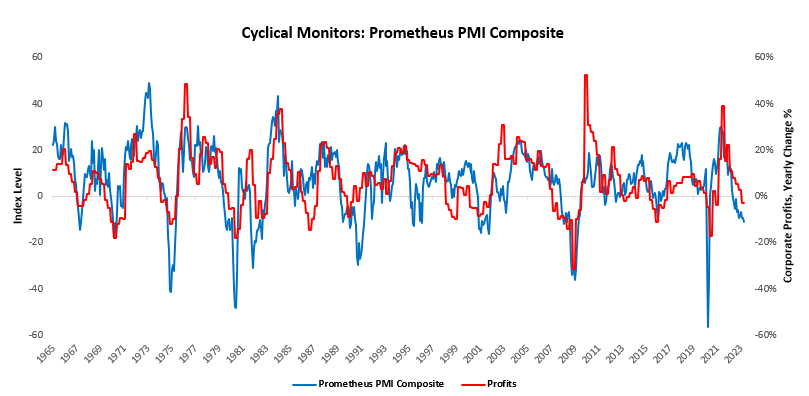
While our PMI composite remained firmly in negative territory, we received some degree of mixed messaging from incremental PMI data points. In particular, Empire Manufacturing PMIs showed sequential improvement, while Philadelphia Fed PMI worsened:
The latest New York Fed manufacturing survey data showed an expansionary reading of 6.6, surprising consensus expectations of -15.1. This reading was a sequential acceleration within an accelerating trend. The largest gaining segment was Shipments, and the most significant slowdown was in Prices Received. We show this below:
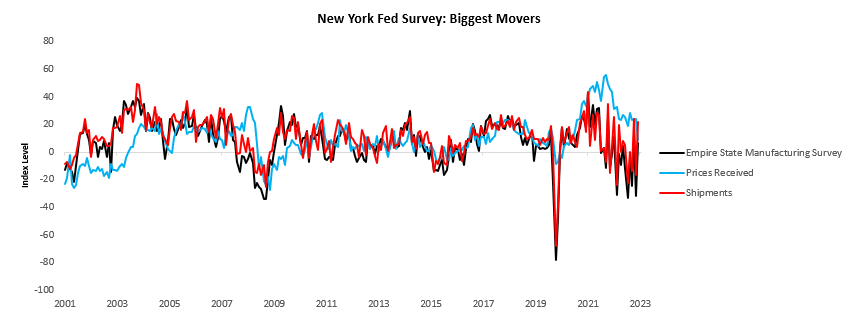
As we can see above, there tends to be considerable noise in month-to-month changes in the index. Nonetheless, this print was marginally positive, while the three-month trend remains negative. Additionally, we also showcase that sub-surveys of the index generally worsened, as can be seen in the table below, which shows most of the latest readings in red:

While Empire showed positive changes, Philadeplhpia Fed PMI worsened. The latest Philadelphia Fed manufacturing survey data showed a contractionary reading of -13.7, disappointing consensus expectations of 0. This reading was a sequential deceleration within an accelerating trend. The largest gaining segment was Shipments, and the largest slowdown was in Prices Paid:
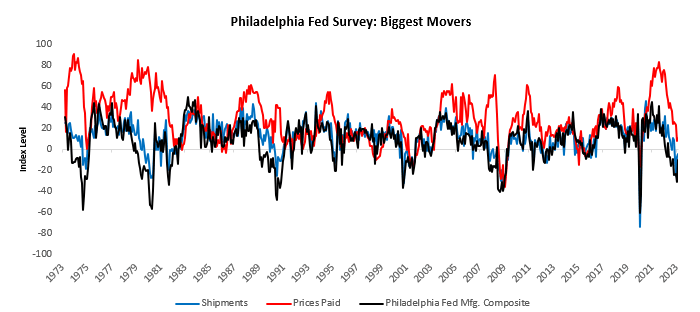
The breadth of the sub-index data remained weak as well:

Therefore, while Empire PMI data suggests better conditions, a comprehensive take suggests flat PMI conditions at best, if not worse. This PMI data is a timely reflection of the ongoing deterioration in manufacturing activity, which we see as weak industrial production data.
The latest data for May shows Industrial Production declined, coming in at -0.16%. This print disappointed consensus expectations of 0.05% and contributed to an acceleration in the three-month trend relative to the twelve-month trend. We show the sequential evolution of the data below:
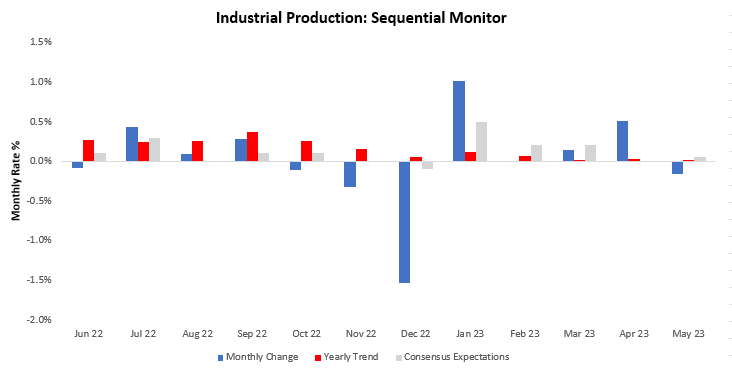
We break this print into its contributions from production coming from Food (-0.04%), Energy (-0.05%), Autos (0.04%), and All Other Items (-0.11%). Additionally, we also showcase the top 10 contributions by industry. The largest contributor this month was Fuels, and the largest detractor was Converted fuel:
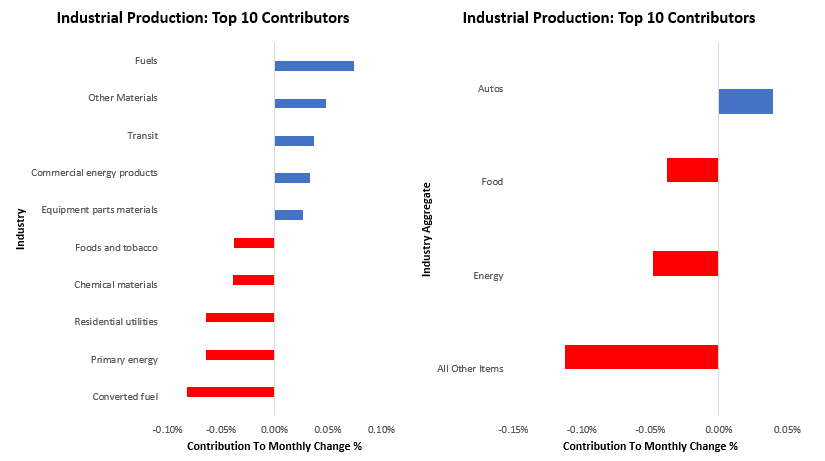
We zoom out to offer further context on the dynamics of industrial production. Over the last year, industrial production has expanded by 0.23%. Below, we present the top six drivers of industrial production, with the three strongest industries highlighted in blue (Fuels, Other Materials, and Transit) and the three weakest industries highlighted in red (Converted fuel, Primary energy, and Residential utilities):
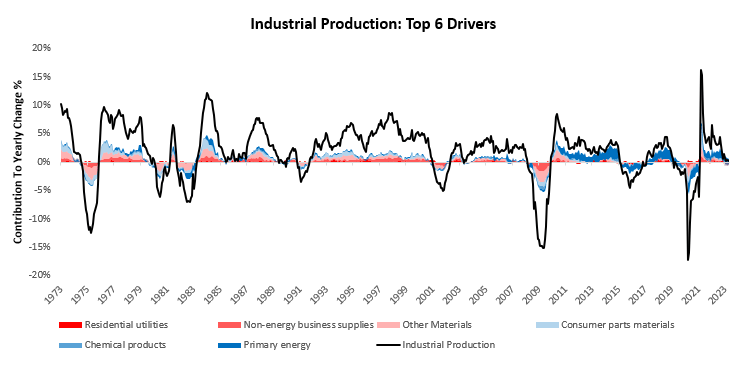
Over the last few decades, the importance of food, energy, and automobiles has risen, accounting for a significant amount of the variation in industrial production. Over the last year, food, energy, and automobiles have contributed 0.73% to the 0.23% change in industrial production. We show this impact below:
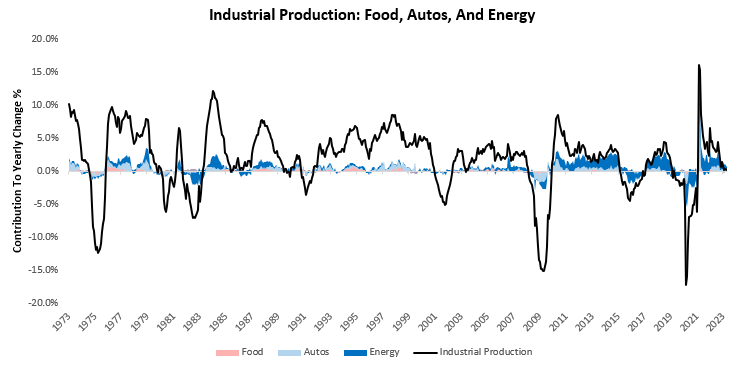
To further assess the health of the current expansion of industrial production, we examine the diffusion of the 28 subsectors we track. This involves examining the number of industries that are expanding versus those that are contracting. We find that 61% of industries are contracting. Below, we visualize how a diffusion index has generally been a good barometer of the durability of upturns and downturns in industrial production:
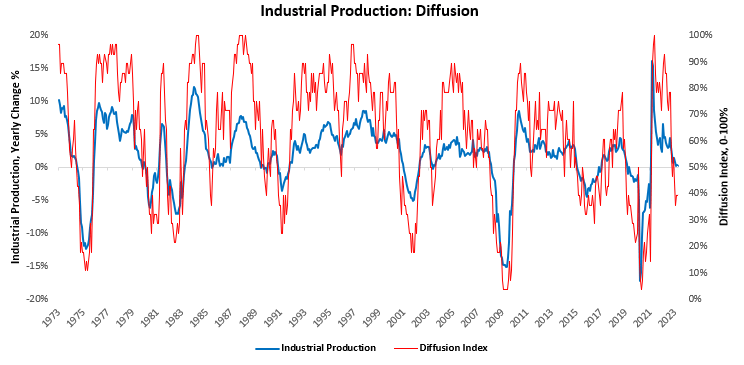
To elaborate further, currently, 11 industries are expanding and contributing 1.56% to industrial production, compared to 17 industries showing contraction and detracting -1.42% from industrial production growth compared to one year prior. We visualize their respective weighted contributions below:
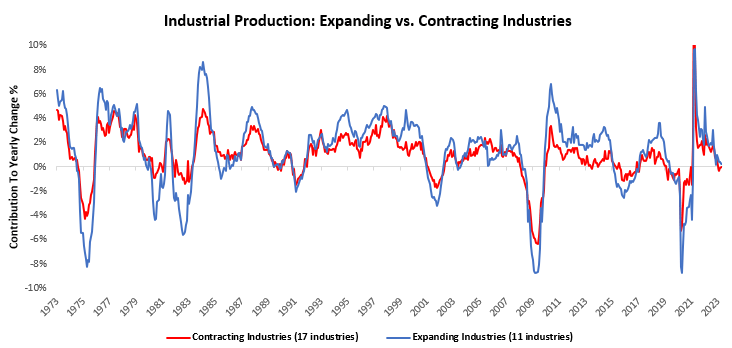
Overall, the latest data continues to suggest weakness in the manufacturing sector, and given cyclical dynamics, these pressures are likely to intensify.
With these dynamics in place and the weakness in earnings (shown below), the pressures on equities continue to build.
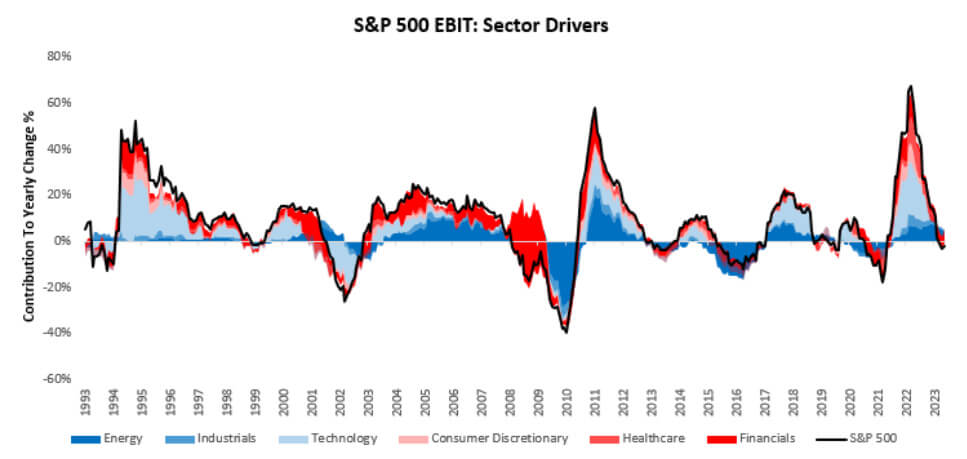
Many macro factors affect asset prices; principally, they are growth, inflation, and liquidity. Based on current and forward-looking measures, we think growth is not a supportive factor to equities and has not been for a while. Our cyclical rotation strategy, which seeks to avoid recession risk in equities, remains in cash.
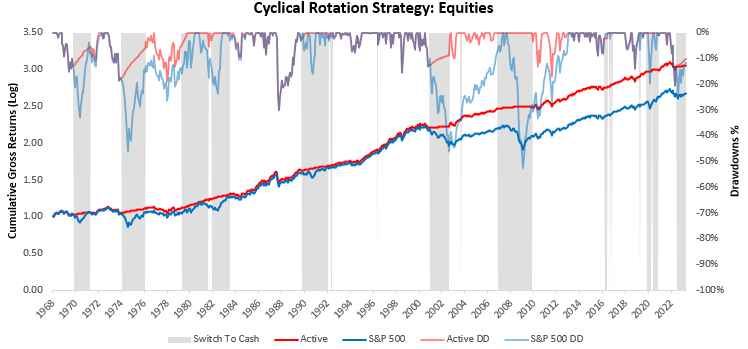
There is a range of reasons one might be long equities at this junction— disinflationary market pricing, liquidity improvements, short-term regime dynamics, or perhaps even bubble-timing alpha. However, cyclical growth is not one of them. Indeed, our ETF portfolio has been long equities for a while now, as it considers various factors in executing positions. However, we think it is essential that investors understand the risk they underwrite when they buy equities at this junction— it’s not because real growth dynamics are likely to accelerate from here.
